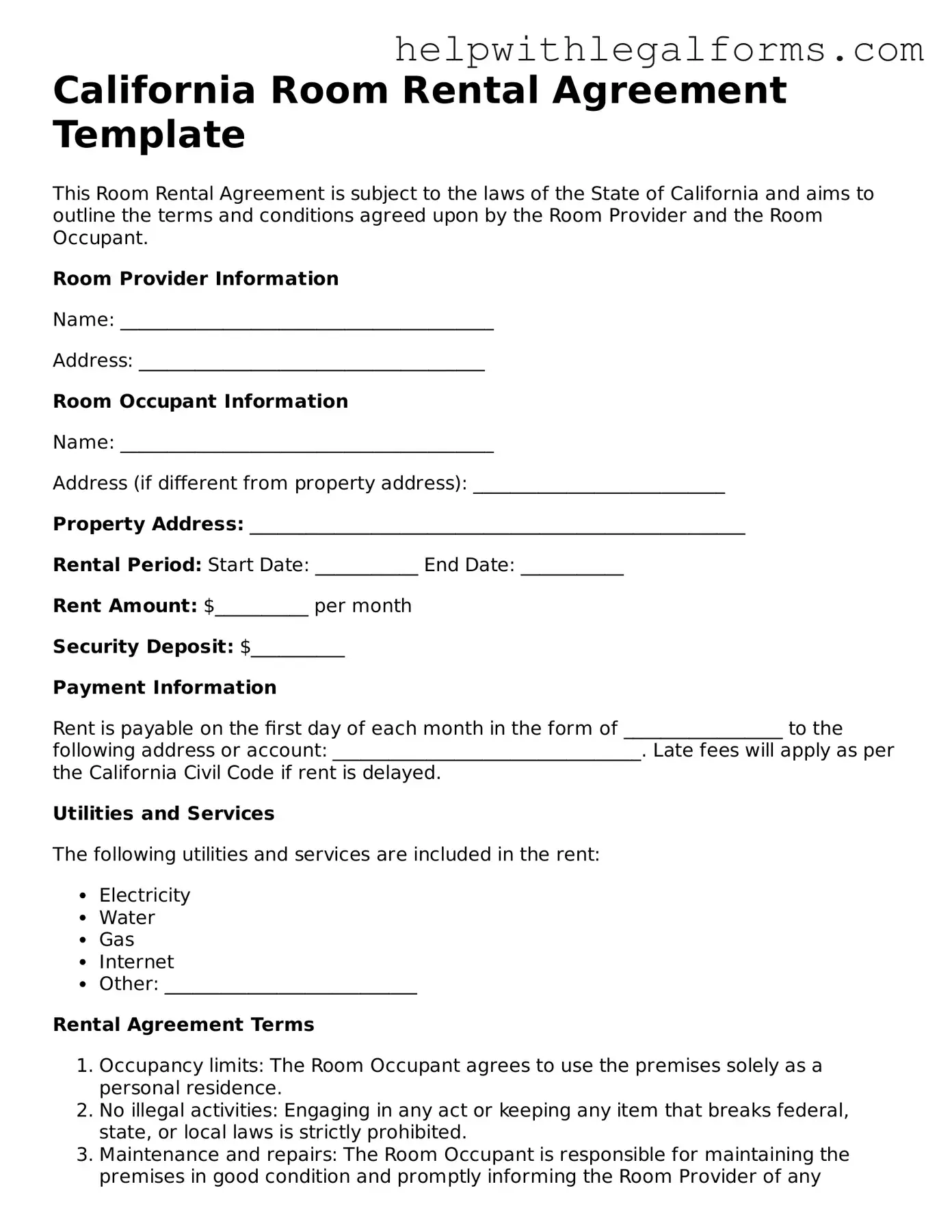What is a California Room Rental Agreement?
A California Room Rental Agreement is a legally binding document between a landlord and a tenant. It specifically outlines the terms under which the tenant is allowed to rent a room within a larger residence. This could be a single room in a family home, an apartment share, or a room in a dormitory-style living quarters. This agreement specifies the rent amount, security deposit, rules for use of common areas, and other essential terms.
Who needs a California Room Rental Agreement?
Anyone who is planning to rent out a room in their property in the state of California should prepare a Room Rental Agreement. Similarly, individuals looking to rent a room in California will benefit from the clear terms and legal protections offered by such an agreement. This document helps ensure that both parties understand their rights and obligations from the start.
What are the key components of a Room Rental Agreement in California?
A comprehensive Room Rental Agreement should include the names and contact information of the landlord and tenant, a detailed description of the room being rented, the rental amount, and payment schedule. It should also cover utility payments, security deposit amount and conditions for return, rules regarding guests, noise, and use of common areas, and any specific duties or responsibilities like maintenance or cleaning. Finally, it should outline the lease term and conditions for renewal or termination.
How does a Room Rental Agreement protect me?
For landlords, a Room Rental Agreement provides a legal framework that can be relied upon if disputes arise regarding payments, property damage, or other issues. For tenants, it ensures that their rights to a safe and secure living environment are upheld. It also provides both parties with a clear understanding of what is expected, thereby helping to avoid misunderstandings or conflict.
Can I modify a California Room Rental Agreement after it has been signed?
Yes, but any modifications to the agreement must be made in writing and signed by both the landlord and the tenant. Oral agreements or understandings are not legally enforceable regarding real estate leases or rental agreements. Therefore, if either party desires to change any terms of the agreement, such as rental amount or lease duration, it's crucial that these changes be formally documented and agreed upon.
What happens if either party violates the agreement?
If the tenant or landlord violates the terms of the Room Rental Agreement, the aggrieved party has the right to seek redress in accordance with California law. Depending on the violation, remedies can include seeking damages, demanding compliance through legal notices, or, in severe cases, terminating the agreement. Both parties should attempt to resolve disputes amicably, but if that is not possible, legal intervention may be necessary.
